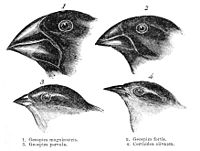
Photo from wikipedia
Abstract This paper reports the modeling method and outcomes of mechanical performance and damage evolution of single-lap bolted composite interference-fit joints under extreme temperatures. The anisotropic continuum damage model involving… Click to show full abstract
Abstract This paper reports the modeling method and outcomes of mechanical performance and damage evolution of single-lap bolted composite interference-fit joints under extreme temperatures. The anisotropic continuum damage model involving thermal effects is established on continuum damage mechanics which integrates the shear nonlinearity constitutive relations characterized by Romberg-Osgood equation. The temperature-induced modification of thermal strains and material properties is incorporated in stress-strain analysis, extended 3D failure criteria and exponential damage evolution rules. The proposed model is calibrated and employed to simulate behavior of composite joints in interference fitting, bolt preloading, thermal and bearing loading processes, during which the influence of interference-fit sizes, preload levels, laminate layups and service temperatures is thoroughly investigated. The predicated interfacial behavior, bearing response and failure modes are in good agreement with experimental tests. The numerical model is even capable of reflecting some non-intuitive experimental findings such as residual stress relaxation and matrix softening at elevated temperatures.
Journal Title: Chinese Journal of Aeronautics
Year Published: 2020
Link to full text (if available)
Share on Social Media: Sign Up to like & get
recommendations!